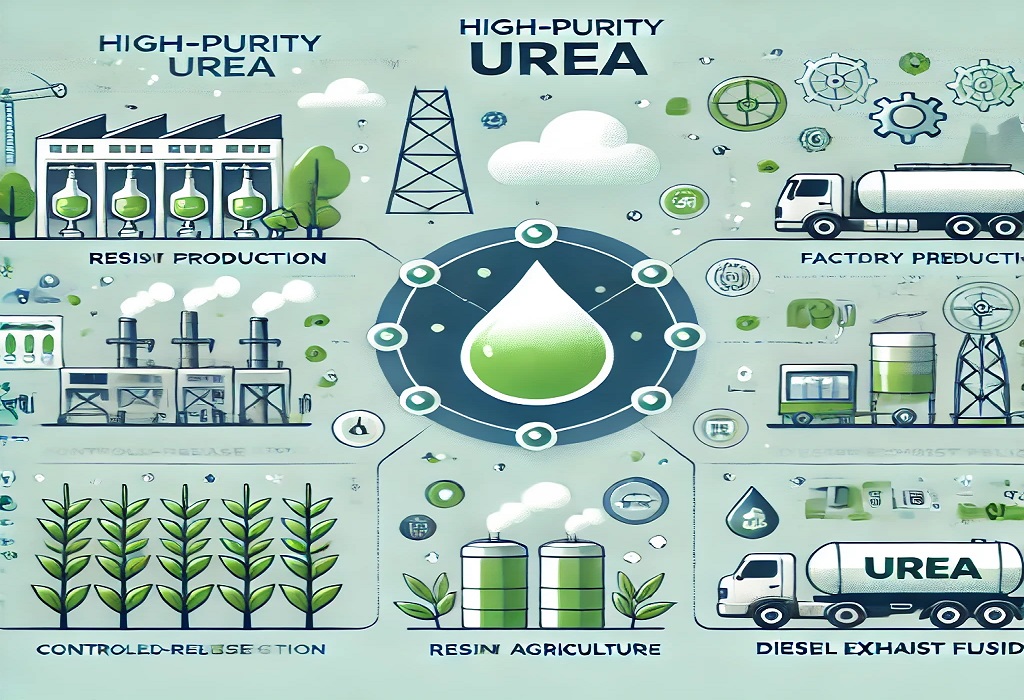Table of Contents
ToggleWhat is High-Purity Urea?
High-purity urea is a refined chemical compound derived from standard urea. By reducing impurities like biuret and heavy metals, it becomes suitable for critical chemical applications.
- Formula: CO(NH₂)₂
- Key Characteristics:
- High nitrogen content (46%).
- Minimal impurities for consistent performance.
- Soluble and stable under standard conditions.
Applications of High-Purity Urea in Chemical Production
High-purity urea is essential for producing urea-formaldehyde (UF) resins, widely used in:
- Laminates.
- Particleboard manufacturing.
- Molded plastic components.
Benefits:
- Ensures uniform product quality.
- Reduces production defects caused by impurities.
2. Pharmaceutical and Cosmetic Industries
- Used in the formulation of pharmaceutical intermediates and dermatological products, including moisturizers and ointments.
- High-purity urea enhances skin hydration and promotes healing.
3. Fertilizer Manufacturing
High-purity urea is a key ingredient in:
- Controlled-release fertilizers for efficient nutrient delivery.
- Foliar sprays for rapid absorption in crops.
Advantages:
- Increases crop yield.
- Minimizes nutrient leaching into water systems.
4. Diesel Exhaust Fluid (DEF) Production
High-purity urea is critical for DEF, a solution that reduces nitrogen oxide (NOx) emissions in diesel engines using SCR (Selective Catalytic Reduction) systems.
Advantages of Using High-Purity Urea
The low impurity levels in high-purity urea ensure reliable performance in sensitive chemical processes.
2. Cost Efficiency
With fewer impurities, manufacturers achieve higher efficiency, reducing waste and production costs.
3. Environmental Sustainability
- In DEF production, urea reduces harmful emissions.
- Controlled-release fertilizers minimize runoff, supporting sustainable farming practices.
4. Broad Applicability
High-purity urea is adaptable across multiple industries, making it a versatile choice for chemical producers.
Challenges in High-Purity Urea Production
Urea production relies on energy-intensive processes, especially for impurity reduction.
Solution: Transition to renewable energy sources in ammonia production.
2. Handling and Storage
Improper storage can lead to moisture absorption and reduced effectiveness.
Solution: Use advanced packaging and climate-controlled storage facilities.
